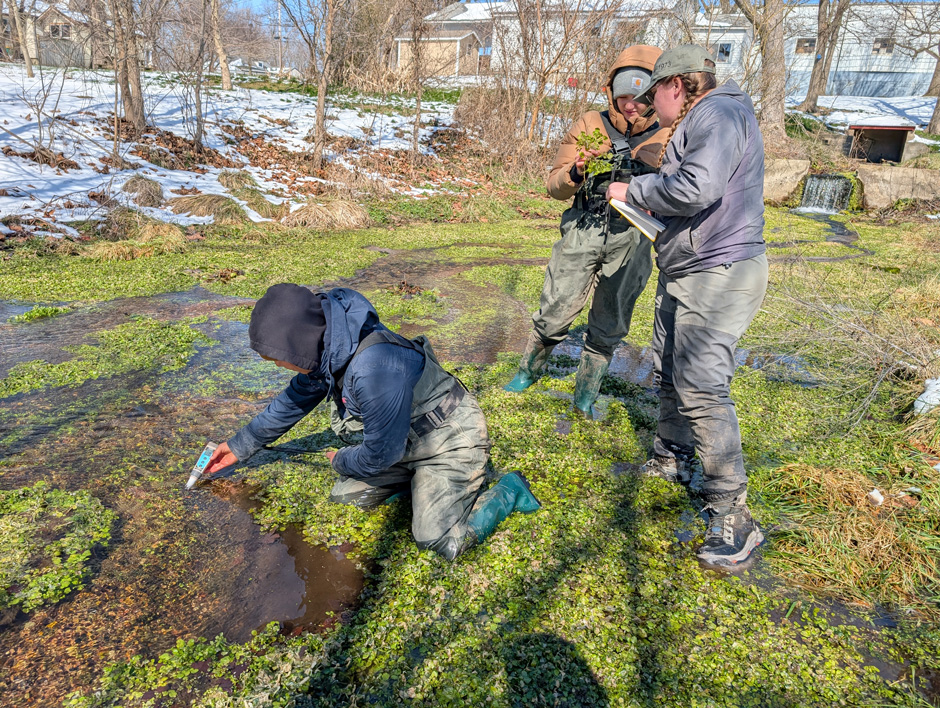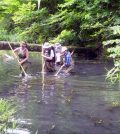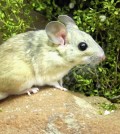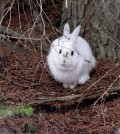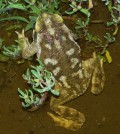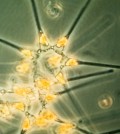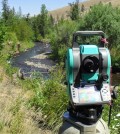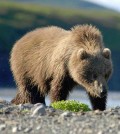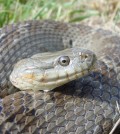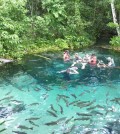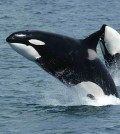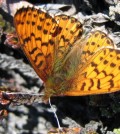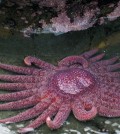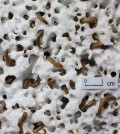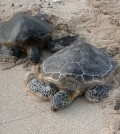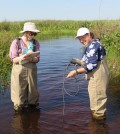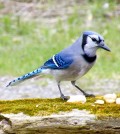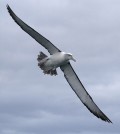Posts for tag "biology"
Research in the Reserve: Promoting Interdisciplinary Conservation at the Great Bay National Estuarine Research Reserve
On an early winter day in 1973, a helicopter buzzed over Durham, New Hampshire, just a few miles from the Atlantic Ocean. One of the helicopter’s guests, oil magnate Aristotle Onassis, owner of Olympic Refining, looked east...
- Posted June 2, 2025
Monitoring Habitat Suitability and Water Quality in Northwest Arkansas Springs
Northwest Arkansas has seen an economic, industrial, and population boom in recent years as a result of expanding businesses, which have created thousands of jobs in the region and the mass migration of employees and construction companies....
- Posted May 26, 2025
James H. Barrow Field Station Research Explores Stream Restoration and Redirected Stream Life
Hiram College in Ohio is notable for its stream restoration work and exceptional student-driven programs
- Posted November 29, 2018
Warming May Spell Disaster For Woodrats Eating Toxic Plants
Woodrats find it harder to process creosote plants at higher temperatures. A tipping point seems to exist above which they will find it tough to thrive.
- Posted February 9, 2016
Shorter Winters, Slow-Changing Coats Threaten Snowshoe Hares
Climate change, as its effects are currently felt, aren’t so bad for snowshoe hares. But in the future, these animals that rely on long periods of winter to determine when they should switch from white fur to...
- Posted January 26, 2016
Amphibian Embryos Tweak pH To Up Survival
Argentinian-led researchers find that amphibian embryos, of the Rhinella arenarum toad, can adjust pH to make conditions better for their survival.
- Posted January 21, 2016
Longer Data Collection Could Better Dissect Ocean Biology Changes
Phytoplankton, very small marine plants that both aid the ocean in taking up atmospheric carbon dioxide and provide the base for the marine food web, are naturally quite variable in their biology. According to a release from...
- Posted January 14, 2016
Piecing Together Riparian Corridor Puzzle Could Provide Species Benefits
Washington State scientists use GIS data, hydrography maps in an ongoing attempt to encourage connection of riparian corridors and help species flourish.
- Posted November 10, 2015
Gauging The Future Of Alaskan Mammals By Looking At Their Past
An investigation led by the U.S. Geological Survey predicts shrinking habitats are in store for Alaskan mammal species.
- Posted November 3, 2015
When Native Prey Abundant, Predators Benefit By Snacking On Invasive Prey
Native predators benefit by supplementing their diets with invasive prey species, say Ohio State scientists, but only when native prey remains abundant.
- Posted October 22, 2015
At Colorado State Bioblitz, 270 Unique Species Found
A recent bioblitz at Colorado State University’s Mountain Campus uncovered 270 unique species that call the surrounding area home, according to a release. A bioblitz is a quick inventory of all the species living in one region,...
- Posted October 15, 2015
UCLA Study Finds Ecotourism Puts Animals At Risk
A study led by scientists at the University of California, Los Angeles, finds that ecotourism — often meant to help conservation efforts — could actually harm animals that tourists are looking to protect, according to a release....
- Posted October 14, 2015
Highly Adaptable Predators Survive At Cost Of Surrounding Ecosystems
Predators need prey, and highly adaptable predators can easily adjust from one type of prey to another. Unfortunately, their choices in prey can throw ecosystems that support them out of balance, a new study from Linkōping Universitet...
- Posted October 13, 2015
Arctic Butterflies Getting Smaller As Climate Warms
Although many scientists have documented changes in species all over the planet due to global warming, not many have turned their attention to changes in butterflies, another species discovered to be sensitive to climate change. But according...
- Posted October 12, 2015
Student Researchers Describe Immune Response Of Sea Stars With Wasting Disease
A group of student researchers has completed an analysis that could one day serve as a basis for a larger discovery on sea star wasting disease.
- Posted October 9, 2015
Styrofoam-Munching Mealworms Could Eliminate Tons Of Waste
Only 10 percent of the 33 million tons of plastic waste produced by the U.S. each year is ever recycled, meaning most of it remains to clutter up the planet. Some of it is also considered to...
- Posted October 8, 2015
Sea Turtle Nesting Season Exceeds Expectations
Researchers are digging sea turtles’ strong nesting season this year, according to the Associated Press. Scientists spent the summer watching over 570 giant loggerhead sea turtle nests along the Georgia coast, where they counted a record number....
- Posted September 25, 2015
Uganda Sampling, Lab Analysis Help Ohio State Scientists Study African Cichlids
Ohio State scientists study how African cichlids respond to environmental changes by sampling streams in Uganda and conducting research in their lab.
- Posted August 2, 2015
Lookup Life App Helps Identify Plants And Animals
Not sure what plant or animal you’re looking at? There’s an app for that! Lookup Life, according to a Treehugger post, will help users identify the plants and animals they encounter. Lookup Life, from the makers of...
- Posted July 22, 2015
Monitored Seabird Populations Have Plummeted 70 Percent Globally
Monitored seabird populations all over the Earth have declined 70 percent, according to a recent University of British Columbia press release. Because seabirds are an especially good indicator of how entire marine environment food webs are doing,...
- Posted July 17, 2015



